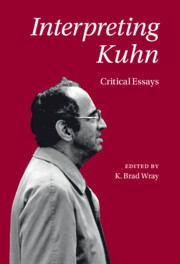Book contents
- Interpreting Kuhn
- Interpreting Kuhn
- Copyright page
- Dedication
- Contents
- Figures
- Contributors
- Acknowledgments
- Abbreviations
- Introduction
- Part I Foundational Issues
- Part II Three Core Concepts
- Part III Kuhnian Themes
- Chapter 8 The Copernican Revolution since Kuhn
- Chapter 9 Kuhn, the Duck, and the Rabbit – Perception, Theory-Ladenness, and Creativity in Science
- Chapter 10 Kuhn on Scientific Discovery as Endogenous
- Chapter 11 Truth, Incoherence, and the Evolution of Science
- Chapter 12 Reassessing Kuhn’s Theoretical Monism
- Bibliography
- Index
Chapter 8 - The Copernican Revolution since Kuhn
from Part III - Kuhnian Themes
Published online by Cambridge University Press: 25 June 2021
- Interpreting Kuhn
- Interpreting Kuhn
- Copyright page
- Dedication
- Contents
- Figures
- Contributors
- Acknowledgments
- Abbreviations
- Introduction
- Part I Foundational Issues
- Part II Three Core Concepts
- Part III Kuhnian Themes
- Chapter 8 The Copernican Revolution since Kuhn
- Chapter 9 Kuhn, the Duck, and the Rabbit – Perception, Theory-Ladenness, and Creativity in Science
- Chapter 10 Kuhn on Scientific Discovery as Endogenous
- Chapter 11 Truth, Incoherence, and the Evolution of Science
- Chapter 12 Reassessing Kuhn’s Theoretical Monism
- Bibliography
- Index
Summary
I argue historical information on the relationship between Copernicus’s work and Islamicate astronomy, which came to light when Kuhn was writing The Copernican Revolution, complicates the depiction of Copernicus’s work as revolutionary, or discontinuous with previous astronomy. I consider Saliba’s claim that Tusi’s work was “a Scientific Revolution before the Renaissance.” I conclude that, although Tusi’s work is important, it is better understood as extending normal science. Similar arguments undermine the claim that Copernicus’s work was revolutionary. Earlier histories of the Copernican revolution have given too little credit to the innovations of Tycho Brahe, and his imitators and opponents, and the solid scientific reasons for preferring Tycho’s system over Copernicus’s as late as 1650. However, the situation in European astronomy and cosmology from the career of Copernicus to the death of Newton does look like a Kuhnian crisis state. It is also possible to locate incommensurabilities between heliocentric and geocentric cosmologies, especially beginning with Kepler. The concept of incommensurability remains an important resource for understanding the history of science.
Keywords
- Type
- Chapter
- Information
- Interpreting KuhnCritical Essays, pp. 145 - 168Publisher: Cambridge University PressPrint publication year: 2021

